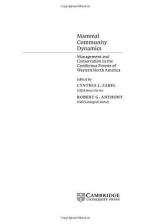|
This section contains 3,252 words (approx. 11 pages at 300 words per page) |

|
Coniferous forests support a wide range of animals, and different regions are home to different species. These animals can be classified as microorganisms, invertebrates, amphibians, reptiles, birds, and mammals.
Microorganisms
A microorganism is an animal, such as a protozoa, that cannot be seen without the aid of a microscope. Every forest is host to millions of these tiny creatures. Microscopic roundworms, or nematodes, for example, live by the thousands in small areas of soil in coniferous forests and aid the process of decomposition.
Bacteria Bacteria are microorganisms that are always present in woodland soil, where they help decompose dead plant and animal matter. In temperate climates, bacteria help create nutrient-rich humus (broken down organic matter). Fewer bacteria are at work in dry climates or in moist climates with long dry seasons.
Invertebrates
Animals without backbones are called invertebrates. They include simple animals such as worms, and...
|
This section contains 3,252 words (approx. 11 pages at 300 words per page) |

|




